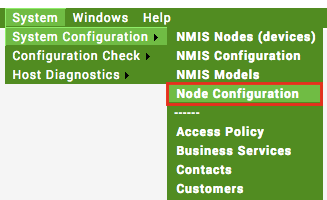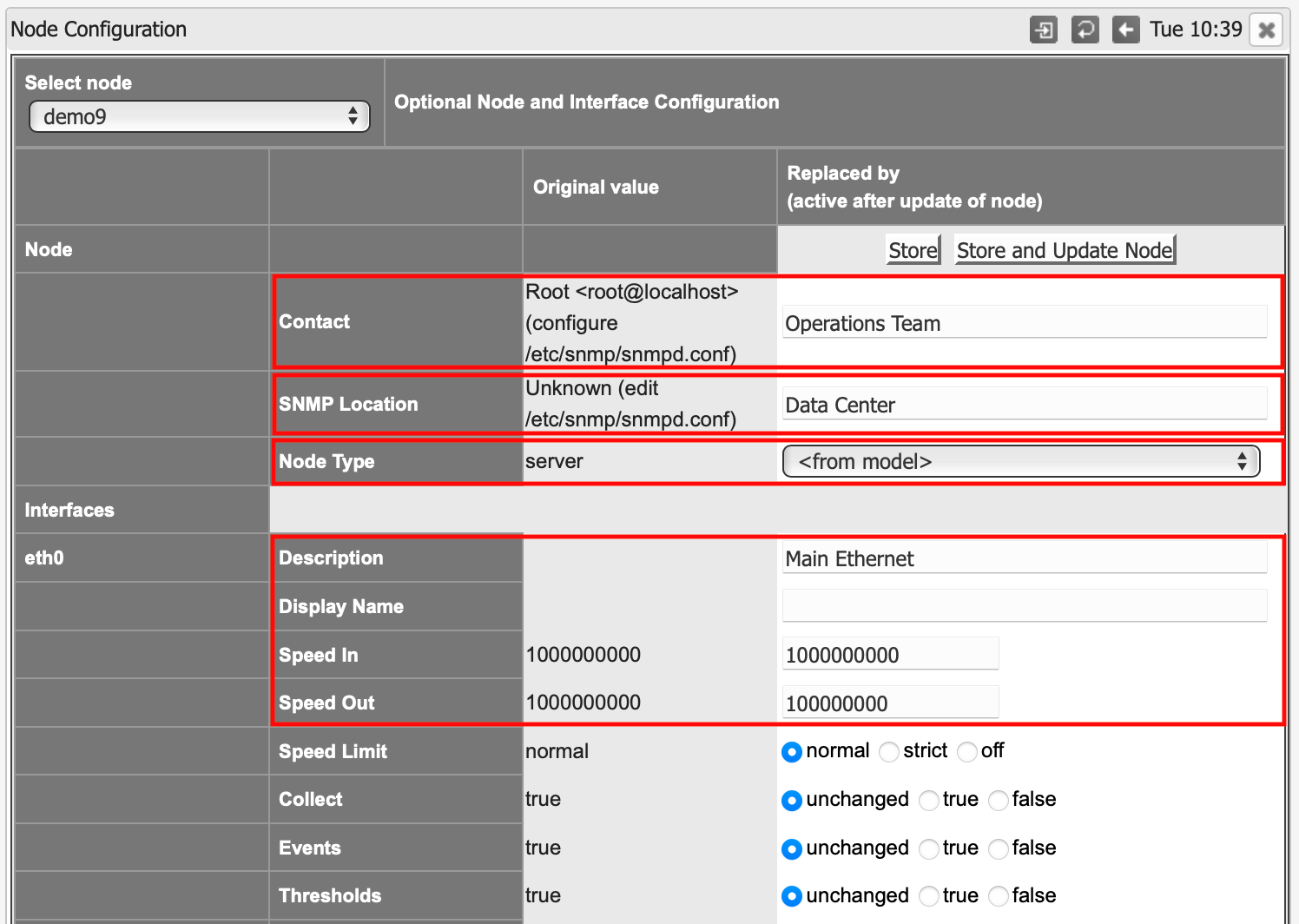NMIS will learn as much as it can about your network automatically and apply your collection policies to manage all the right things in a node, but sometimes, you want to override what it learns from the devices and tell it other things. This is done using NMIS Node Configurationor nodeconf for short. The intent of the nodeconf is that you do not need to modify the configuration of the actual device itself, you can change how NMIS is going to treat, handle this device by effectively modifying what data comes back from SNMP.
Nodeconf is a very handy capability for operations teams who might not have configuration access to the end node/device.
The Node Configuration is able to customise the following properties of a node.
You can access node configuration a few ways.
If you are using NMIS 8.5.6G or greater including NMIS9 it will be in the Setup Menu as "Node Customisation".

In earlier version of NMIS8 "System -> System Configuration" Menu as "Node Configuration".

With the above two methods you will then need to select the node from the drop down.
-Both methods also work in NMIS9

In NMIS for a while it is accessible while looking at the node.

You will be looking at a screen with many options and two main columns as below, you can start changing the setting you need to, in the example below, the settings for Contact, Location the Description and Input and Output speeds have been changed for eth0 (shown in red).
The principle here is that the Original value is what the value was before any changes by Node Configuration, and "Replaced by" are the settings you want NMIS to use now.

I can change the Node Type by selecting the drop down and then option from the list. By default the Node Type is set by the Model, so this is part of the node discovery.
More details on Node Type customisation can be found here: Opmantek System Configuration#ConfigurationAPI

Looking down the list of interfaces, I can see that the Loopback is not being collected, and I would like to see that, so I change the interface to Collect true.

Then I can save all my changes by selecting "Store" and if I am ready for NMIS to start using those changes, I can select "Store and Update Node", then NMIS will put the changes into action.

NMIS has a highly scalable configuration and policy system to help you control how and what you manage from the network and servers, Node Configuration gives you the ability to override this and collect what you need to collect now.